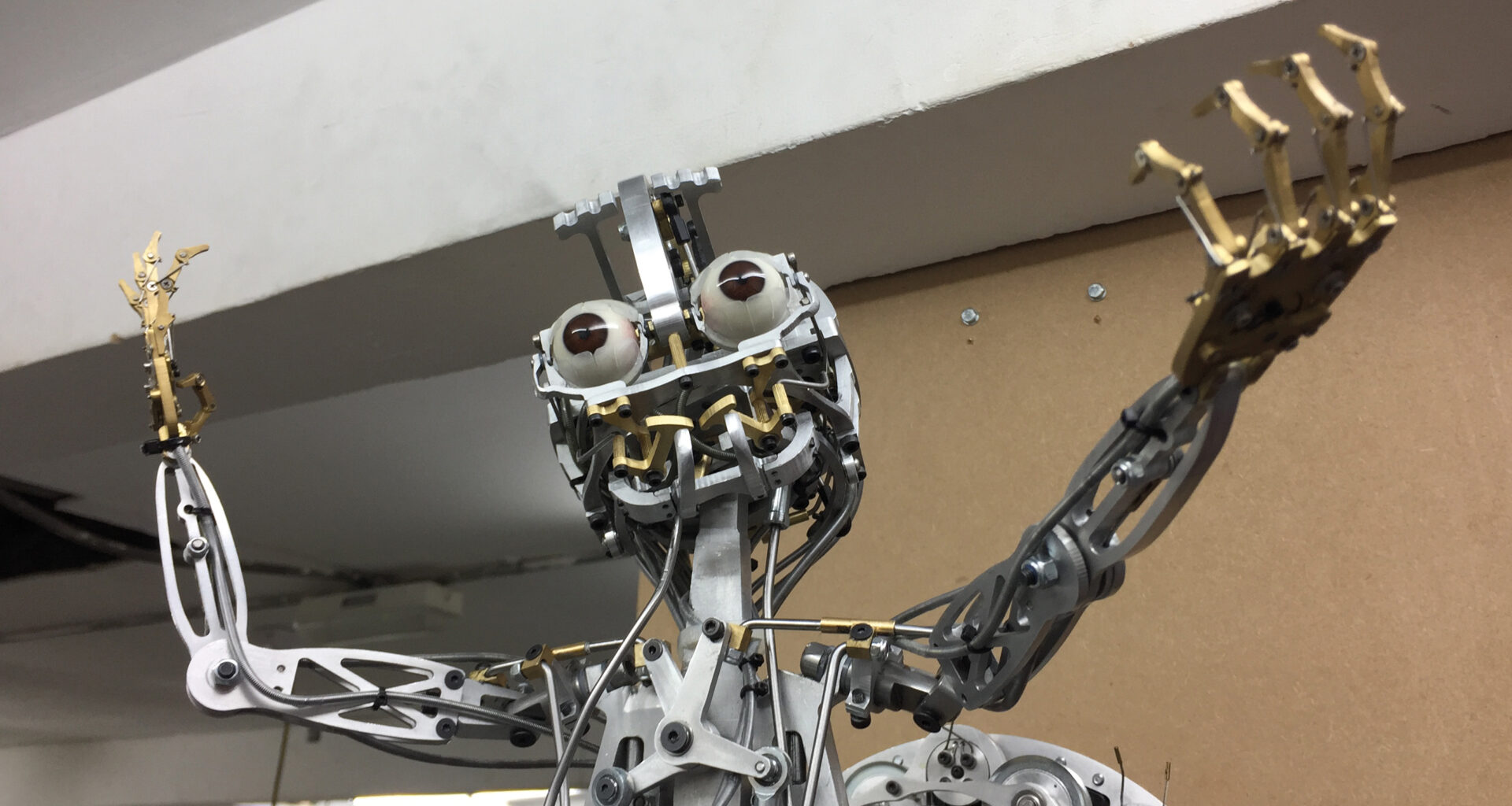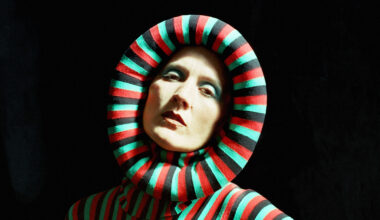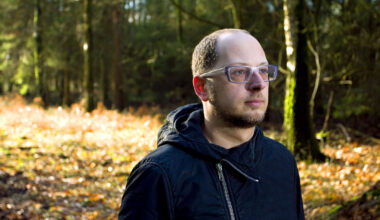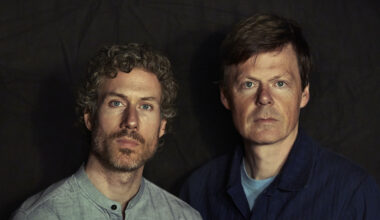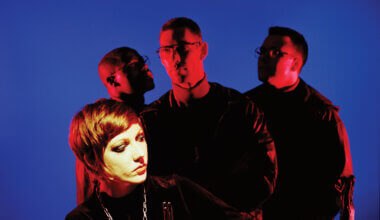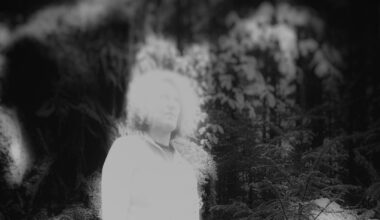Sound specialists who create subtle aural worlds that you might not notice if you weren’t listening for them, the work of the London-based Coda To Coda adorns TV shows, feature films, documentaries and exhibitions, including their inventive soundscape for The Science Museums’ ‘Robots’ show
Let’s jump back a little, back to our robot special (Issue 27) and to the opening of the Robots exhibition at The Science Museum. We were there for a sneak preview of the show and to have a chat with lead curator Ben Russell. “Electronic Sound,” he says as we’re introduced. “Do you know we’re stood in a musical robot?” We didn’t.
“We wanted a nice, fruity exhibition that’s got all the robots and the objects in it,” explains Ben, “but you need to support the exhibits, so you need some film, you need lighting and you need sound. We worked with a company who designed the sound as a whole series of tiny clips of music that are pieced together with an algorithm so they constantly change and reinvent themselves.”
Our head almost explodes at the very thought that exhibitions even have soundtracks, let alone robot-powered ones. Once our interview is over, we wander round the exhibition spaces again, just listening. The polyrhythms of clocks, all ticks and tocks and chimes, the sounds of the industrial revolution, the automated looms that hammer out an almost techno-like rhythm, the early sci-fi thrums and rumbles, it’s all so… musical. The Science Museum have gone as far as releasing the soundtrack on CD because, well, it stands up as an album in its own right.
The ‘Robots’ soundtrack was made by Coda To Coda, whose east London studio Ben rather vividly describes as “a bunker with no windows”. Best we go see for ourselves we thought.
While it may be subterranean, Coda To Coda’s home is not remotely bunker-like. It houses four recording studios that fan out from a central kitchen area and it’s all rather cosy. While lights flicker on machines and hi-tech mixing desks dominate studios, an old wooden kitchen table is centre stage in the kitchen area around which, steaming cuppas on go, sit composers and sound designers Sam Britton and Will Worsley and producer Tanya Auclair, who along with sound recordist Aaron May, created the Robots soundscape.
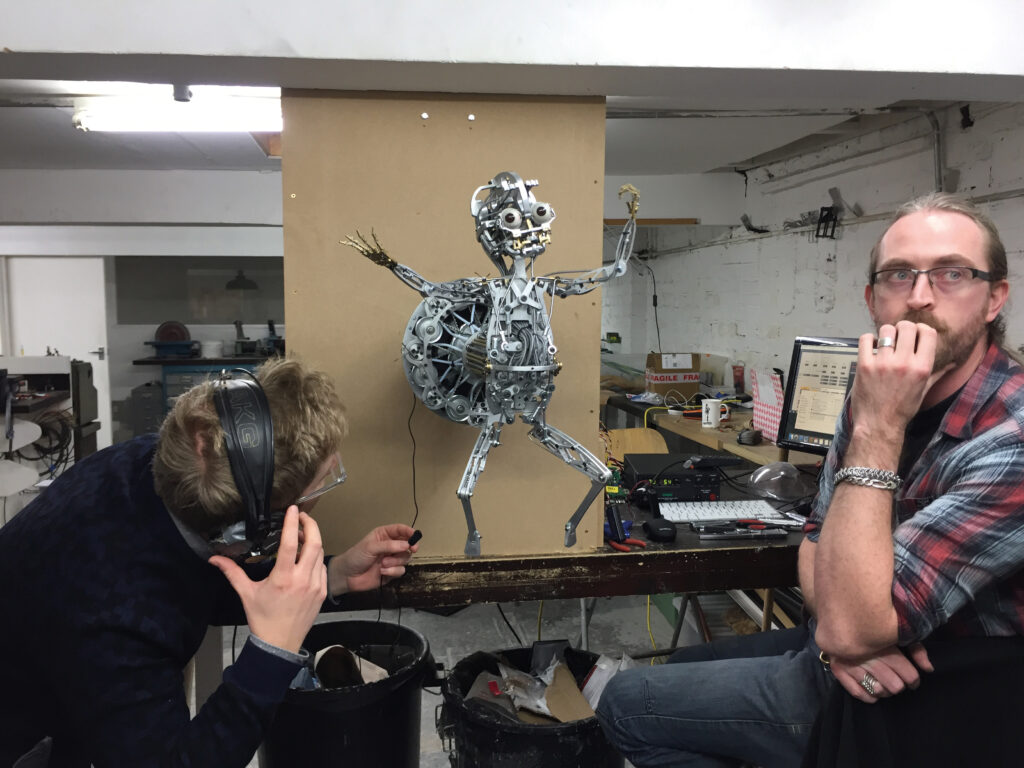
Coda To Coda set up shop almost a decade ago. It began when Sam and Will, who cut their teeth working in recording studios working their way up from tea boys to engineers, met through a mutual friend who’d set up a production company and needed a soundtrack to a series of documentaries featuring the renowned British architect Will Alsop. The company went on to land a gig producing an animation series for BBC’s CBeebies channel and again they called on Coda To Coda for all things sound. The 52-part ‘Messy Goes To Okido’ was something of an eye opener for Sam and Will.
“With animation you’re not dealing with sound that comes from a shoot,” says Sam. “You’re not taking your source from the real world and adding music, it’s about telling a story using sound as much as with the pictures. So with a lot of those films it’s the sound that lends it that realism, which we found really interesting.”
It’s that pressing of the interesting button that seems to sustain and drive their work today.
“Releasing the ‘Robots’ CD wasn’t intentional,” says Will. “It was something that came very late on in the process.”
“If our role was just a case of making some muzak that just bubbles along there is no way we could have created an album from of it,” adds Tanya.
What you are about to discover puts their work on ‘Robots’ a loooong way from muzak.
“When we got asked to pitch for the soundscape,” says Sam, “we thought it would be amazing to try and create a musical robot and evoke the spirit of the exhibition in sound form.”
A musical robot? Indeed. It is, according to the sleevenotes, “a series of complementary musical machines, each of which generates its own unique soundscape according to certain parameters”. While the album is a selection of excerpts that move seamlessly through the 500-year quest to create humanoid robots, the real deal is mind boggling.
“There’s one central computer that creates a 64-channel soundscape, feeding each channel to a separate speaker in the gallery,” says Will. “What you hear is being generated within the computer, so it’s all being played live. All the samples are also being triggered according to the different parameters we’ve set and so they change over time.”
Which means that as you walk around the exhibition what you’re hearing is a soundtrack unique to your visit. It will never sound the same twice. What’s more it could just go on regenerating forever. Head not leaking quite enough? The real kicker is that while you’re there, unless someone points all this out to you, the sound is just part of the experience.
“It’s really nice that it isn’t obtrusive,” says Tanya. “On one level you are totally clocking it, but not in a kind of ‘Whoah, what’s that sound?’ kind of way. I remember when we were installing it and I was stood in the ‘Marvel’ section, looking at all the clocks and they’re static, they’re not working, but because of the sound everything felt like it was coming to life.”
“We went to The Science Museum early one morning to meet The Master Of Clocks who let us stick contact microphones on all kinds of different devices,” adds Will.
“So the soundtrack you hear in ‘Marvel’ is just a lot of clocks running at slightly different speeds,” explains Sam. “The core element is six clock mechanisms that create polyrhythms and within those we could then create any number of different settings, pick out certain types of clock by making them run slower or faster and create patterns.”
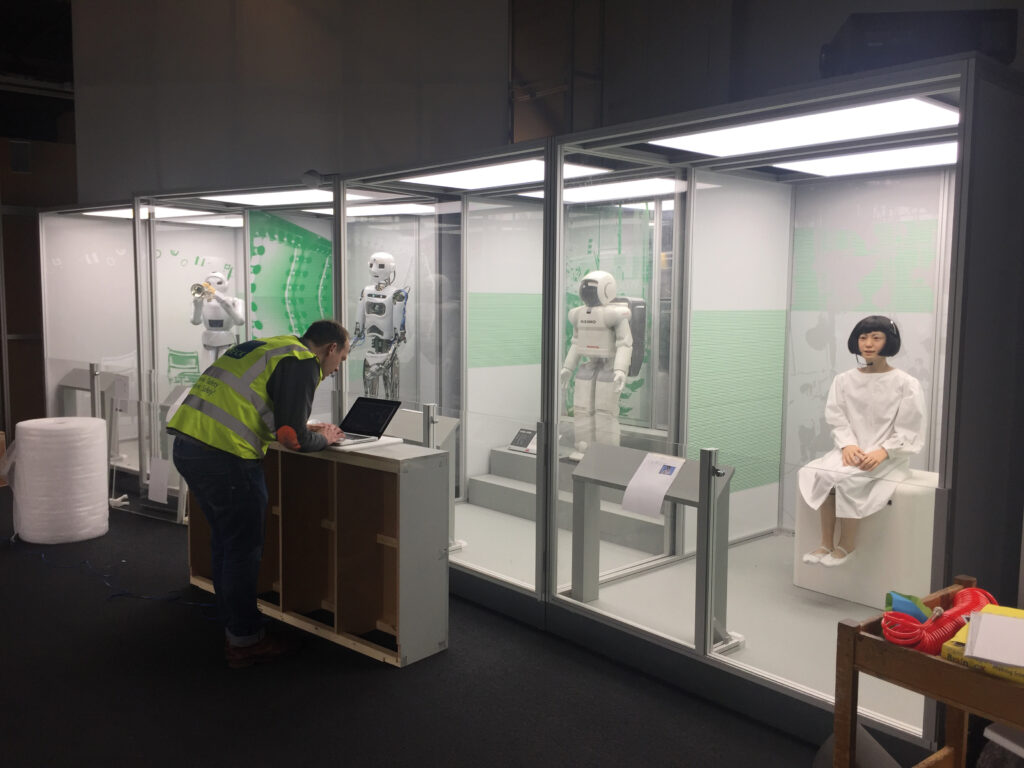
But it takes on a whole new level when you realise the entire exhibition has a pulse, a heartbeat.
“The exhibition has a master tempo of 120bpm ,” says Will, matter of factly. “Everything, the videos, lights and the sound are all triggered from that. The idea was there would be certain things that would synchronise at certain points. It’s quite uncanny when you catch the screens out of the corner of your eye and all the cuts are changing at the same time.
This master tempo also helps as you move from one area to the next. While sounds might wash from one speaker to the next, the idea is that your trip round the exhibition feels like a continuous journey rather than moving from one era to another, because the whole thing is ebbing and flowing in time.
“It doesn’t feel as jarring as it otherwise would because everything is in time, which is quite nice,” smiles Sam. “The entire exhibition itself is quite subtle, it’s very nuanced.”
The whole thing feels so well thought out and is so beautifully executed that its making must have been a pleasure itself. We wonder if there’s anything they particularly enjoyed recording?
“There’s a sequence called ‘Recreation’ where we had to imagine the sounds of a park in the future,” says Sam. “So we created six or seven different robot birds that almost sound like real birds. When you walk around you think, ‘That’s birdsong’, but actually they’re made on a modular synth. Then there’s a section called ‘Dream’, which uses the original talking clock. It’s actually in The Science Museum collection and it’s the most fascinating object. The voice was recorded, etched on to glass plates, they had six or seven of them, and each plate just moves a little with each announcement of the time.”
While the work is undoubtedly a soundscape, do they, we wonder, see what they do as music? If it had lived in the exhibition space alone and didn’t find its way onto CD where it is intended to be listened to in the same way you would the latest New Order live album or whatever, would we even be asking ‘Is this music?’. But maybe we should. On its own ‘Robots: The Exhibition Soundtrack’ to give it its official title, stands up to anything we review in our pages.
“I think as a company, on a day-to-day level, we fight the battle all the time about how people listen to things,” says Sam. “A lot of it is how it’s presented and contextualised, but I guess that’s also an expectation of what music is. Is our expectation of popular music just a song that tells a story?”
From the start, the ‘Robots’ exhibition itself plays with those expectations, so it’s no surprise that the soundtrack does too. What you expect is to see a load of robots, but you don’t see the robots until the end.
“The first thing you see is a robot baby,” says Sam of the specially commissioned humanoid welcome you receive on entering the show. “And then you’re standing in a room full of clocks. If someone said they were going to do an exhibition about robots and there was going to be a load of clocks at the beginning you’d be like, ‘Nah’, but it’s brilliant.”
It really is. You can see why The Science Museum wanted the bright minds of Coda To Coda on board. If you’ve not seen the exhibition yet, let alone heard it, we would thoroughly recommend doing so. Chop chop.
‘Robots: The Exhibition Soundtrack’ is available from codatocoda.bandcamp.com
